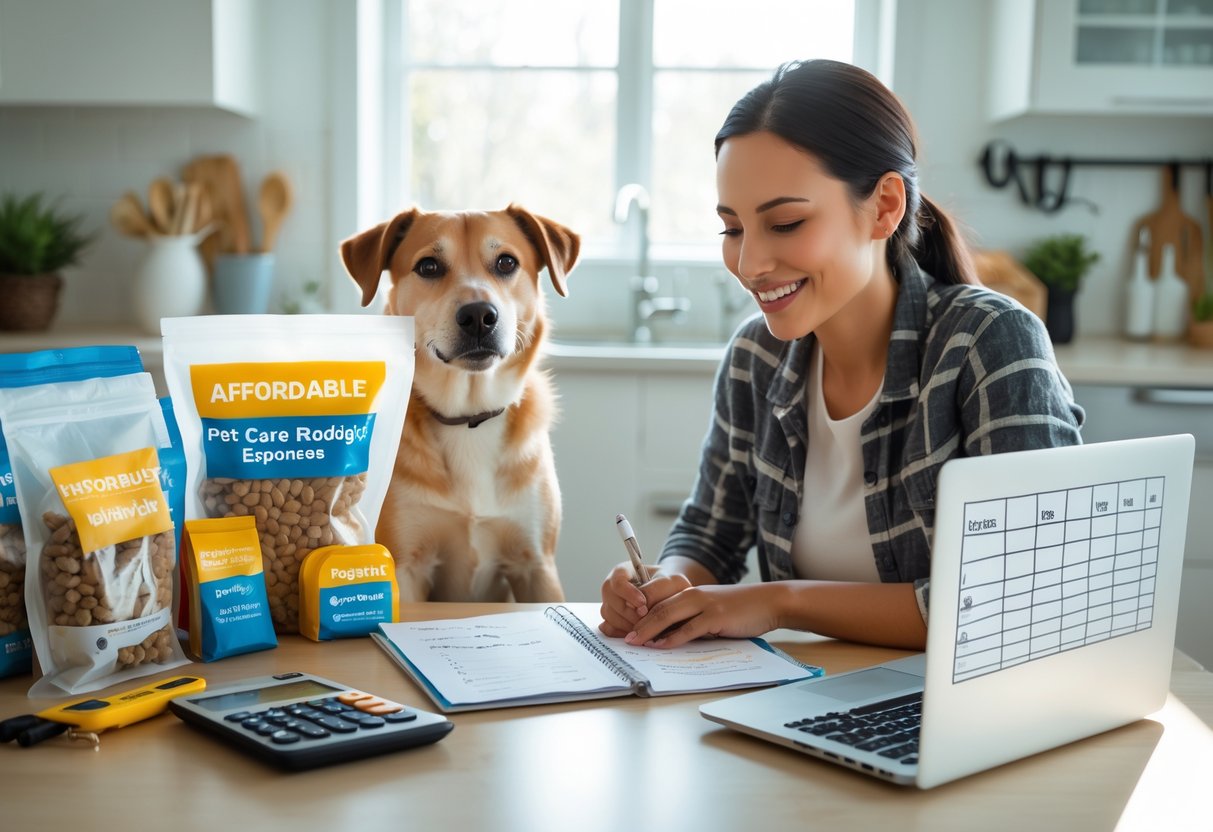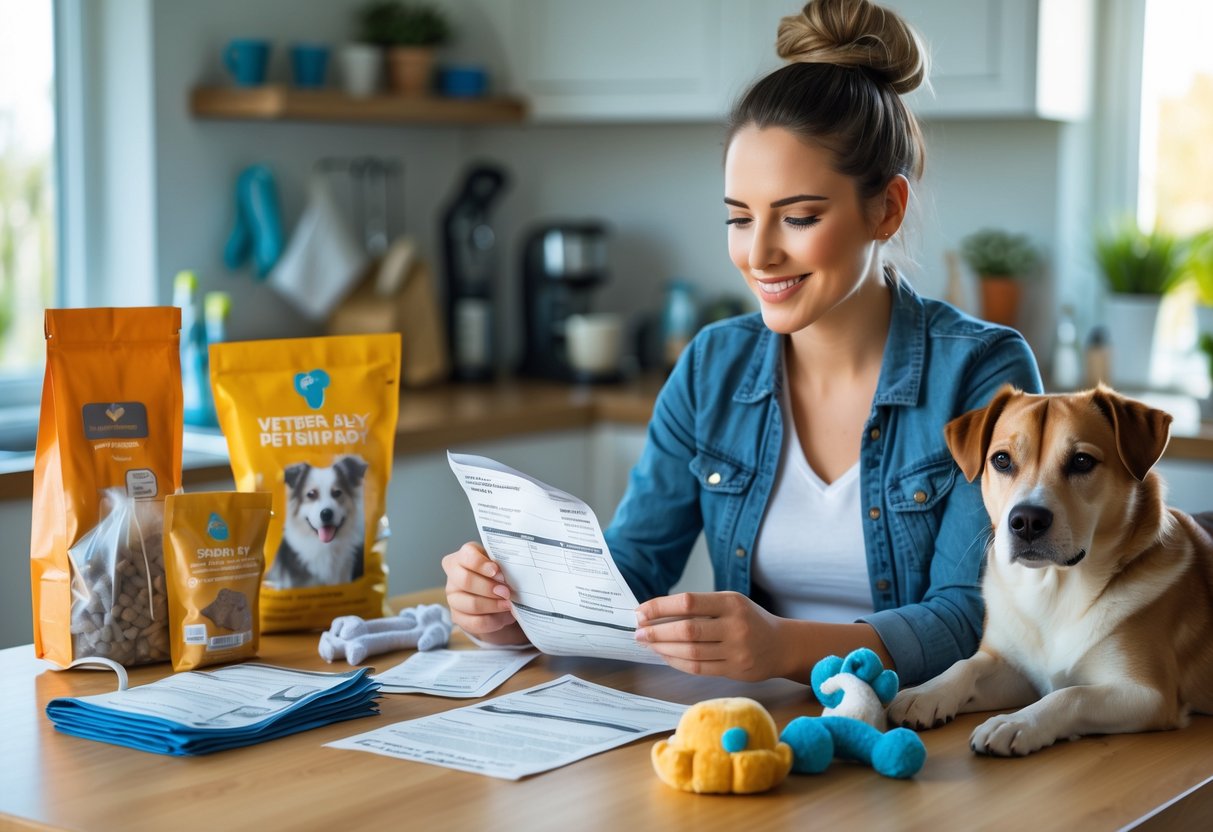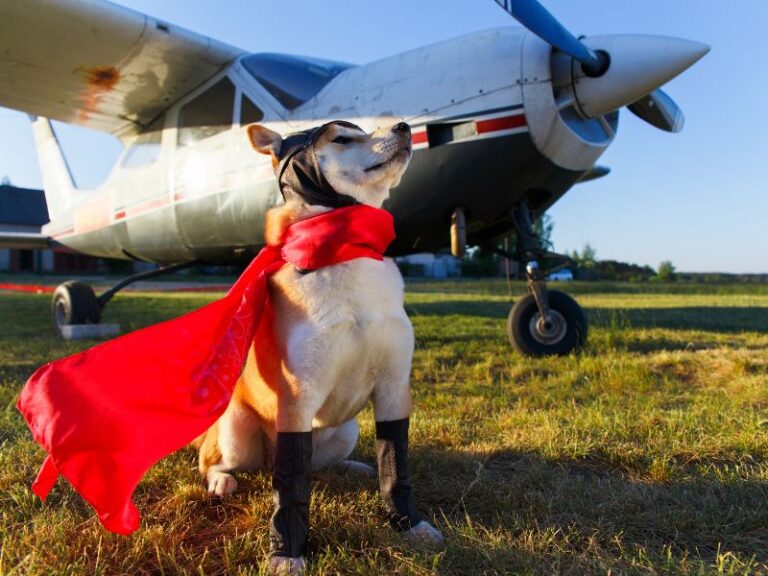Owning a pet is rewarding, but wow, the costs can sneak up on you. Beyond just food and toys, there are those pesky fees—vet visits, grooming, and even emergency care—that really add up.
To manage your pet expenses well, you need to plan for these hidden and ongoing costs before bringing a pet home.

Saving money on pet care is possible if you make smart choices, like buying supplies in bulk or seeking out affordable vet options. Budgeting isn’t just about being frugal—it’s about avoiding nasty surprises and making sure your pet gets what they need.
Understanding where your money goes is honestly the first step to affordable pet ownership. It’s kind of freeing, once you get the hang of it.
This guide will help you spot those sneaky, overlooked costs and show some practical ways to save. By learning how to manage your pet’s expenses, you can give them great care without blowing your budget.
The True Cost of Pet Ownership: Revealing Hidden and Unexpected Expenses
When you own a pet, you’re in for more than just basic costs like food and adoption fees. There are ongoing and surprise expenses that tend to pile up over time.
Knowing these costs up front helps you plan better and avoid those “uh-oh” moments.
Understanding Recurring Pet Expenses
You’ll need to budget for regular costs that come around every month or year. This includes food, grooming, and supplies like bedding, toys, and leashes.
According to the American Pet Products Association, food and treats alone can set you back hundreds of dollars a year.
Routine vet visits—think vaccinations, flea control, dental cleanings—are another must. These keep your pet healthy, but the bills add up fast. For example:
- Food & treats: $200-$500 per year
- Grooming: $300 annually (especially for dogs)
- Routine vet care: $200-$400 every year
Don’t forget licensing, microchipping, and replacing worn-out supplies. These are predictable, sure, but still easy to underestimate.
Major Hidden Veterinary and Medical Costs

Pets sometimes need medical care that goes way beyond the basics. Surgeries, specialist visits, and treatment for chronic conditions are all on the table.
Unexpected medical bills—like surgery for a broken leg or dental work—can cost thousands. The ASPCA says first-year medical expenses for dogs can hit $1,500 to $2,000. Cats might be a bit less, but not by much.
Be ready for things like:
- Spaying/neutering fees
- Emergency surgeries
- Long-term medication for illnesses
- Diagnostic tests (X-rays, blood work)
Honestly, these costs blindside a lot of new pet owners. Planning ahead is key.
Emergency Care and Insurance Considerations
Emergencies are usually the most expensive part of having a pet. One unexpected vet visit can mean treatment, tests, and maybe even an overnight stay—all with a hefty price tag.
Pet insurance can help manage these costs by covering accidents and illnesses. But insurance premiums? They’re all over the place, depending on your pet’s breed, age, and health.
Typical insurance premiums run from $30 to $70 per month. It pays to compare plans and read the fine print.
Insurance doesn’t cover everything, so check what’s included and what the deductibles are. Having a little emergency fund or some insurance can really save your bacon when the unexpected hits.
Smart Pet Spending: Essential Tips for Affordable and Responsible Pet Care
You can manage pet care expenses by reducing routine costs, tracking your spending, and finding ways to save without skimping on quality. It’s not always easy, but a few changes can make a big difference.
Strategies for Managing and Reducing Routine Costs
Pick affordable, nutritious pet food that suits your pet. Buying in bulk or sticking to store brands can help your wallet breathe a little easier.
Regular grooming at home saves a surprising amount over time. Preventive care—like vaccines and flea control—really does help you dodge bigger vet bills down the road.
Compare prices on medications and supplies, and keep an eye out for community clinics with low-cost services. If you’re up for it, some pet owners find deals through online pharmacies or local pet groups.
You might want to set up a pet savings account or look into pet insurance. Either way, having a backup plan means less stress when life throws you a curveball.
Pet Budgeting Tips and Expense Tracking

Try creating a budget that lists every pet-related cost—food, vet visits, grooming, toys, and treats. Apps like Mint or You Need a Budget (YNAB), or even a good old spreadsheet, can help you track monthly expenses.
Set aside a bit each month for emergencies. This stash can cover surprise vet bills or sudden medical care. It’s not a perfect system, but it works.
Grouping expenses into “daily,” “monthly,” and “annual” categories makes planning easier. Budgeting isn’t glamorous, but it’s the best way to keep your pet happy and your wallet intact.
Tools worth checking out for pet budgeting and expense tracking: Mint (https://mint.intuit.com/), YNAB (https://www.youneedabudget.com/), and PetDesk (https://petdesk.com/) for managing vet appointments and reminders. They’re not magic, but they sure make life simpler.
Maximizing Savings Without Sacrificing Quality
Hunt down coupons, discounts, or loyalty programs at your favorite pet stores or even online. It’s surprising how often you’ll stumble on deals if you just check.
Some vet clinics toss in package deals for vaccinations and check-ups, so it’s worth asking about. There are even apps like Honey or Rakuten that can help you snag extra savings when shopping online for pet supplies.
Homemade or DIY toys? Seriously, they’re not just cheap—they’re fun to make, too. There are tons of tutorials on YouTube showing how to turn old socks or cardboard into cat or dog toys.
When it comes to meds, don’t be shy—ask your vet if there’s a generic option that’s just as safe, but easier on your wallet. GoodRx and PetMeds are handy tools for comparing prices on pet prescriptions.
Need a groomer, boarding, or daycare? Friends or online groups are usually happy to share their budget-friendly picks. Sites like Rover or Wag! can also help you compare local options and read real reviews.
At the end of the day, your pet’s health and comfort comes first. Saving money’s great, but it’s not worth cutting corners where it really counts, right?


